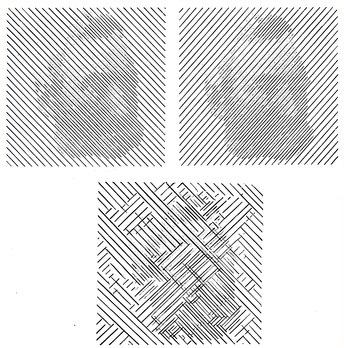Peter Ludvig Panum1820–1885
Panum was born in Rønne, Denmark and held the chair of medical chemistry, physiology and general pathology at Keil University from 1853 to 1864. It was during this period that he wrote his monograph on binocular vision (1858). After Wheatstone’s article on the stereoscope was translated into German (in 1842) its impact was dramatic. On the one hand, it argued against the prevailing view of single vision advanced by Vieth and Müller, and on the other it presented an empiricist interpretation of binocular vision. It opened up new ways of examining and analyzing combination and competition between the eyes. One of those to take up the challenge posed by Wheatstone’s work was Panum. Not only did he introduce the concept of fusional areas that now bear his name, but he ushered in the stimulus that has been employed more than others for the study of binocular rivalry – orthogonal gratings. He remarked that gratings produced the strongest rivalry and that it was difficult to represent the ensuing changes: occasionally complete gratings were briefly visible but the dynamically varying, mosaic-like composites were seen most of the time. Panum took these to be indices of the physiological processes at play in binocular vision: “Following the lawful rules that have been stated, the mosaic-like filling of the general visual field, combined with partial fusion of the impressions taking place, arises from neither psychological causes, attention, imagination or the like, nor from any dread of double images, nor from a total alternative paralysis of the two retinas, but from very characteristic means of perception or sensory energies emanating from the simultaneous action of the excitation of corresponding retinal points on the central organ of vision (in the brain).” Panum’s portrait is presented three times in a diagram taken from his monograph: in each of the orthogonal gratings and in the mosaic composite that reflects an aspect of binocular rivalry.
